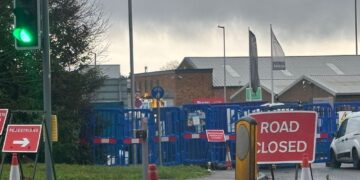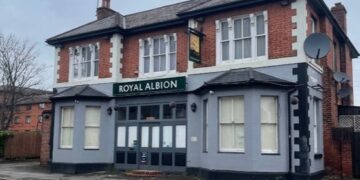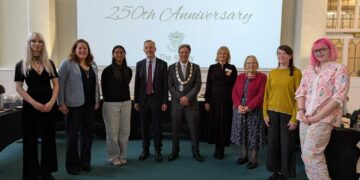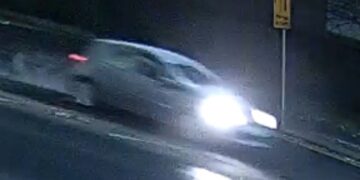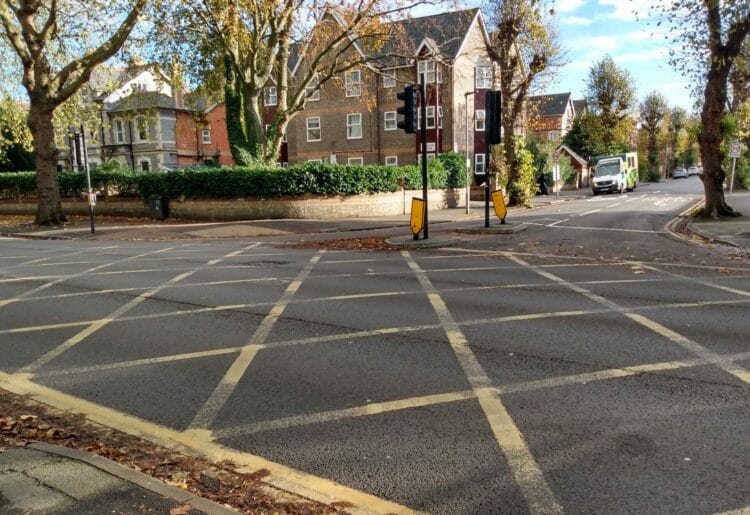One of Reading’s busiest roads could be reduced to two lanes according to a plan drawn up by the council.
London Road can regularly be seen full of cars during the morning and evening rush hours as drivers get to and from work.
It serves as a key route from East Reading into the town centre. It currently has three lanes which are open to cars and other motor vehicles.
Council plans could see the road reconfigured to provide two lanes instead, with road space being taken up by two cycle lanes.
A concept drawing by the council’s highways team shows two lanes for motor vehicles, with two segregated cycle lanes running along each side of the carriageway.
These changes could be introduced to London Road between Cemetery Junction and Sidmouth Street.
Currently, the pavement of London Road is shared between pedestrians and cyclists. Although the use of e-scooters is illegal on a public highway, e-scooter riders can regularly be seen using the pavement.
At Cemetery Junction, the road would be reconfigured so that a two-way cycle lane can be established to allow cyclists to cross the junction safely.
The bus lanes on Kings Road and five car parking spaces in front of the Tesco Express on London Road would remain.
The concept design for changes is just one of the schemes and initiatives designed to improve walking and cycling as part of the Reading Transport Strategy 2040.
Justifying the changes, the council’s webpage ‘London Road Active Travel improvements’ stated: “London Road between Cemetery Junction and Sidmouth Street is a busy road.
“The road is a route to the Royal Berkshire Hospital and a campus of the university.
“It is difficult for cyclists to use because it can mean moving across three lanes of traffic to make a turn.
“The wide pavements include provision for cyclists but will not be a good solution for encouraging more people to walk and cycle.”
The webpage stated that the desired outcomes are encouraging more people to cycle through the introduction of segregated lanes, similar to those in Shinfield Road, improving safety for cyclists, and having less traffic congestion leading to better air quality.
The Reading Transport Strategy 2040 is currently undergoing a consultation.
Its main objective is to encourage walking and cycling as much as possible whenever it is practical to do so.
Improving air quality by reducing emissions is another main objective, but the council has ruled out introducing an ultra-low emission zone (ULEZ) in Reading.
The strategy can be found on the council’s Consult Reading website, and anyone wishing to comment on the strategy can do so by filling out an online survey.
Questions can be emailed to transport@reading.gov.uk.


